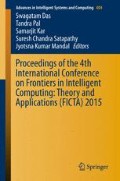Abstract
Cyber security has become very significant research area in line due to the increase in the number of malicious attacks by both state and nonstate actors. Ideally, one would like to properly secure the machines from being infected by viruses of any form. Nowadays, botnets have become an integral part of the Internet and the main drive for creating them is for financial gain. A bot conceals itself using a secret canal to communicate with its governing command-and-control server. Botnets are well-ordered from end to end using protocols such as IRC, HTTP, and P2P. Of all HTTP-based and IRC-based, P2P botnet detection became a challenging task because of its decentralized nature. The paper focuses on the techniques that are predominantly used in botnet detection and we formulate a method for detecting the P2P botnets using supervised machine learning algorithms such as random forest (RF), multilayer perceptron (MLP), and K-nearest neighbor classifier (KNN). We analyze the performance of selected algorithms there by revealing the best classification algorithm for detecting P2P botnets.
Access this chapter
Tax calculation will be finalised at checkout
Purchases are for personal use only
References
Barthakur, P., Dahal, M., Ghose, M.K.: An efficient machine learning based classification scheme for detecting distributed command & control traffic of P2P botnets. p. 9 (2013)
Biau, G.: Analysis of a random forests model. JMLR. org, 1063–1095 (2012)
Gandotra, E., Bansal, D., Sofat, S.: Malware Analysis and Classification: A survey. Scientific Research Publishing (2014)
Haddadi, F., Morgan, J., et al.: Botnet behaviour analysis using ip flows: with http filters using classifiers. In: 28th International Conference on Advanced Information Networking and Applications Workshops (WAINA), pp. 7–12 (2014)
Li, L., Mathur, S., Coskun, B.: Gangs of the internet: towards automatic discovery of peer-to-peer communities. In: IEEE Conference on Communications and Network Security (CNS), pp. 64–72 (2013)
Lu, C., Brooks, R.: Botnet traffic detection using hidden markov models. In: Proceedings of the Seventh Annual Workshop on Cyber Security and Information Intelligence Research, p. 31 (2011)
Perényi, M., Dang, T.D., Gefferth, A., Molnár, S.: Identification and analysis of peer-to-peer traffic, pp. 36–46 (2006)
Rahbarinia, B., Perdisci, R., Lanzi, A., Li, K.: Peerrush: Mining for unwanted P2P traffic, pp. 194–208, Elsevier (2014)
Sebastian Garcia, V.U.: Malware capture facility project. http://mcfp.weebly.com/
Singh, K., Agrawal, S.: Comparative analysis of five machine learning algorithms for IP traffic classification. In: International Conference on Emerging Trends in Networks and Computer Communications (ETNCC), pp. 33–38 (2011)
Stevanovic, M., Pedersen, J.M.: Machine learning for identifying botnet network traffic (2013)
Strayer, W.T., Lapsely, D., Walsh, R., Livadas, C.: Botnet detection based on network behavior. Botnet Detection, pp. 1–24. Springer, New York (2008)
Vania, J., Meniya, A., Jethva, H.: A review on botnet and detection technique, pp. 23–29 (2013)
Victoria, U.: Isot research lab datasets. http://www.uvic.ca/engineering/ece/isot/datasets/
Zhang, J., Perdisci, R., Lee, W., Luo, X., Sarfraz, U.: Building a scalable system for stealthy P2P-botnet detection. IEEE, pp. 27–38 (2014)
Zhao, D., Traore, I., Sayed, B., Lu, W., Saad, S., Ghorbani, A., Garant, D.: Botnet detection based on traffic behavior analysis and flow intervals. Elsevier, pp. 2–16 (2013)
Author information
Authors and Affiliations
Corresponding author
Editor information
Editors and Affiliations
Rights and permissions
Copyright information
© 2016 Springer India
About this paper
Cite this paper
Bharathula, P., Mridula Menon, N. (2016). Equitable Machine Learning Algorithms to Probe Over P2P Botnets. In: Das, S., Pal, T., Kar, S., Satapathy, S., Mandal, J. (eds) Proceedings of the 4th International Conference on Frontiers in Intelligent Computing: Theory and Applications (FICTA) 2015. Advances in Intelligent Systems and Computing, vol 404. Springer, New Delhi. https://doi.org/10.1007/978-81-322-2695-6_2
Download citation
DOI: https://doi.org/10.1007/978-81-322-2695-6_2
Published:
Publisher Name: Springer, New Delhi
Print ISBN: 978-81-322-2693-2
Online ISBN: 978-81-322-2695-6
eBook Packages: EngineeringEngineering (R0)

